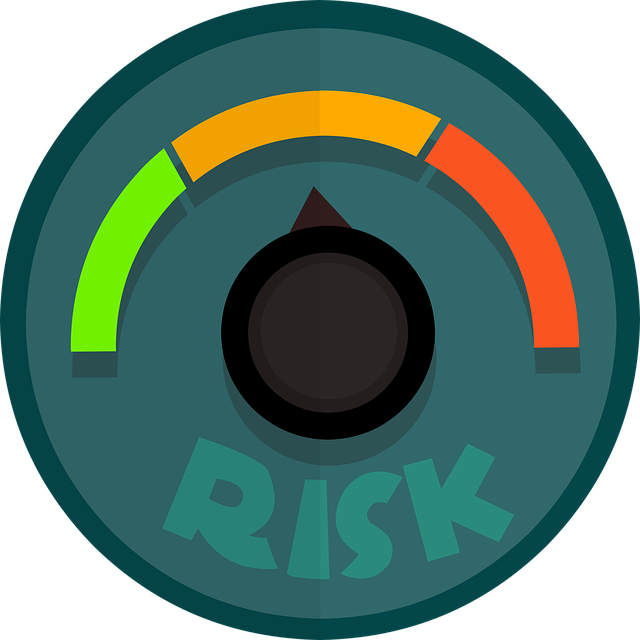Certified Public Accountants (CPAs) face growing complexities in regulatory compliance, driven by digital transformation. Robust CPA IT risk assessments are essential to navigate this landscape. These assessments integrate technical analysis with business process understanding and accounting practices to identify vulnerabilities. By focusing on access controls and audit trail integrity, CPAs can ensure data security and financial accuracy. Regular testing and continuous monitoring mitigate evolving cyber threats, aligning systems with industry best practices and regulatory requirements. Following assessments, targeted remediation strategies are implemented, including policy updates, enhanced file security, and system access controls, supported by IT legal specialists. Dynamic risk management through ongoing reviews ensures CPAs stay compliant, maintaining the integrity of financial statements in a digital era.
In the ever-evolving landscape of financial regulations, Certified Public Accountants (CPAs) face heightened scrutiny in their IT systems. This article delves into the crucial aspect of ensuring CPAs’ digital infrastructure meets compliance standards. We explore the intricate relationship between IT and financial compliance, highlighting the significance of CPA IT risk assessments. By understanding regulatory requirements, conducting thorough gap analyses, and implementing effective remediation strategies, CPAs can navigate the complexities, fostering a culture of robust, ongoing monitoring.
- Understanding Regulatory Compliance for CPAs
- The Role of IT Systems in Financial Compliance
- Conducting Effective CPA IT Risk Assessments
- Identifying Potential Compliance Gaps
- Implementing Remediation Strategies
- Continuous Monitoring and Updating for Robust Compliance
Understanding Regulatory Compliance for CPAs

For Certified Public Accountants (CPAs), navigating the complex landscape of regulatory compliance is a crucial aspect of their role in ensuring financial accuracy and transparency. Regulatory compliance for CPAs goes beyond adhering to general accounting principles; it involves understanding and implementing specific rules and regulations related to financial reporting, data security, and internal controls. These requirements are designed to protect stakeholders by maintaining the integrity and reliability of financial information.
CPAs play a pivotal role in managing IT systems that support financial reporting processes. This includes conducting regular CPA IT risk assessments to identify vulnerabilities and ensure the security and accuracy of audit trails and regulatory data systems. By integrating robust IT solutions for financial reporting, CPAs can streamline their workflows, enhance data integrity, and meet evolving regulatory standards. Effective management of IT for financial reporting not only reduces the risk of errors but also facilitates efficient audits, thereby strengthening the overall credibility of financial statements.
The Role of IT Systems in Financial Compliance

In today’s digital age, IT systems play a pivotal role in financial compliance for Certified Public Accountants (CPAs). These systems facilitate accounting processes, record-keeping, and data analysis, making them integral to maintaining regulatory adherence. However, as the complexity of regulations grows, so does the corresponding CPA IT risk assessments. CPAs must ensure their IT infrastructure implements robust access controls accounting for sensitive financial data. This involves meticulous configuration of user permissions and encryption protocols to safeguard against unauthorized access or data breaches.
Moreover, effective IT legal support for CPAs is crucial in navigating the ever-changing regulatory landscape. Data retention CPA practices heavily rely on IT systems to store, manage, and retrieve records accurately and securely. Ensuring these systems comply with relevant laws and industry standards not only mitigates legal risks but also enhances the overall integrity of financial reporting. By integrating stringent access controls, secure data storage methods, and regular reviews as part of their IT risk assessments, CPAs can ensure that their digital tools become powerful allies in upholding regulatory compliance requirements.
Conducting Effective CPA IT Risk Assessments

Conducting effective CPA IT risk assessments is a critical component of ensuring financial systems meet regulatory compliance requirements. These assessments go beyond mere technical analysis to incorporate an understanding of business processes, accounting practices, and the specific regulatory environment in which CPAs operate. By integrating these perspectives, CPAs can identify potential risks related to access controls within accounting systems and the integrity of audit trails, both essential elements of IT audits for accountants.
Moreover, thorough risk assessments should consider not only existing controls but also their effectiveness and alignment with industry best practices. Regular testing and validation of access controls accounting measures ensure that they remain robust against evolving cyber threats. Similarly, continuous monitoring of audit trails IT helps detect anomalies or discrepancies early on, enhancing the accuracy and reliability of financial reporting. Ultimately, these comprehensive assessments empower CPAs to proactively mitigate risks and maintain regulatory compliance in an increasingly digital landscape.
Identifying Potential Compliance Gaps

Identifying potential compliance gaps is a critical step for CPAs aiming to ensure their financial IT systems meet regulatory requirements. It involves a comprehensive review of existing processes, policies, and technological infrastructure within an organization. By conducting detailed CPA IT risk assessments, professionals can uncover areas where practices may not align with current regulations. These gaps could range from inadequate data retention policies, as required by various accounting standards, to outdated security measures failing to protect sensitive financial information, a concern often highlighted in IT audits for accountants.
A thorough assessment should consider the specific industry regulations and the organization’s unique operational landscape. For instance, CPAs handling large volumes of client data must ensure robust data protection measures are in place, addressing both technical and procedural aspects. This process also facilitates the development of targeted strategies to mitigate risks, thereby enhancing the overall resilience of financial IT systems against legal and compliance challenges, ensuring the continued provision of reliable IT legal support for CPAs.
Implementing Remediation Strategies

Implementing effective remediation strategies is a vital step for CPAs aiming to ensure their financial IT systems adhere to regulatory compliance requirements. Following a comprehensive CPA IT risk assessment, which identifies potential vulnerabilities and gaps in data security, organizations can proactively address these issues. This process involves a multi-faceted approach, including updating existing policies and procedures, implementing robust file security measures, and enhancing system access controls.
By prioritizing these remediation efforts, CPAs can fortify their regulatory data systems against potential threats. Engaging IT legal support specialists can provide crucial guidance tailored to the unique challenges faced by financial professionals. This collaborative approach ensures that IT solutions not only meet compliance standards but also contribute to the overall resilience of the organization’s data management practices.
Continuous Monitoring and Updating for Robust Compliance

Maintaining compliance with ever-evolving regulatory standards is a continuous process that requires more than just initial setup. CPAs must incorporate continuous monitoring and updating into their IT risk assessment strategies to ensure robust compliance. Regularly reviewing and adapting to changes in regulations, industry best practices, and emerging technologies is essential to mitigating potential CPA IT risks.
By implementing dynamic monitoring, firms can identify vulnerabilities and proactively address them before they lead to security breaches or non-compliance issues. This proactive approach involves regular IT audits for accountants, examining regulatory data systems, and upholding strict file security protocols. Staying agile in this manner allows CPAs to stay ahead of the curve, demonstrating a commitment to maintaining integrity and accuracy in all financial operations.
